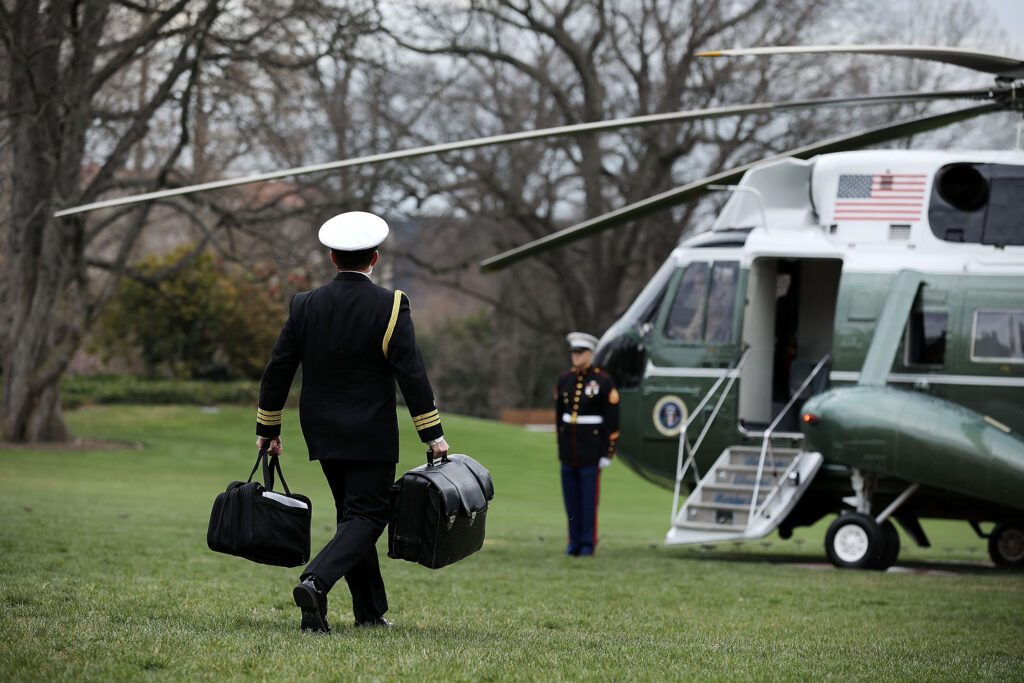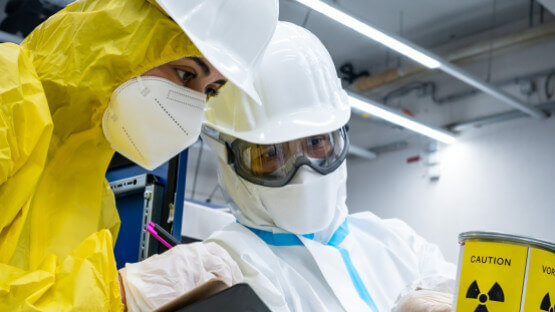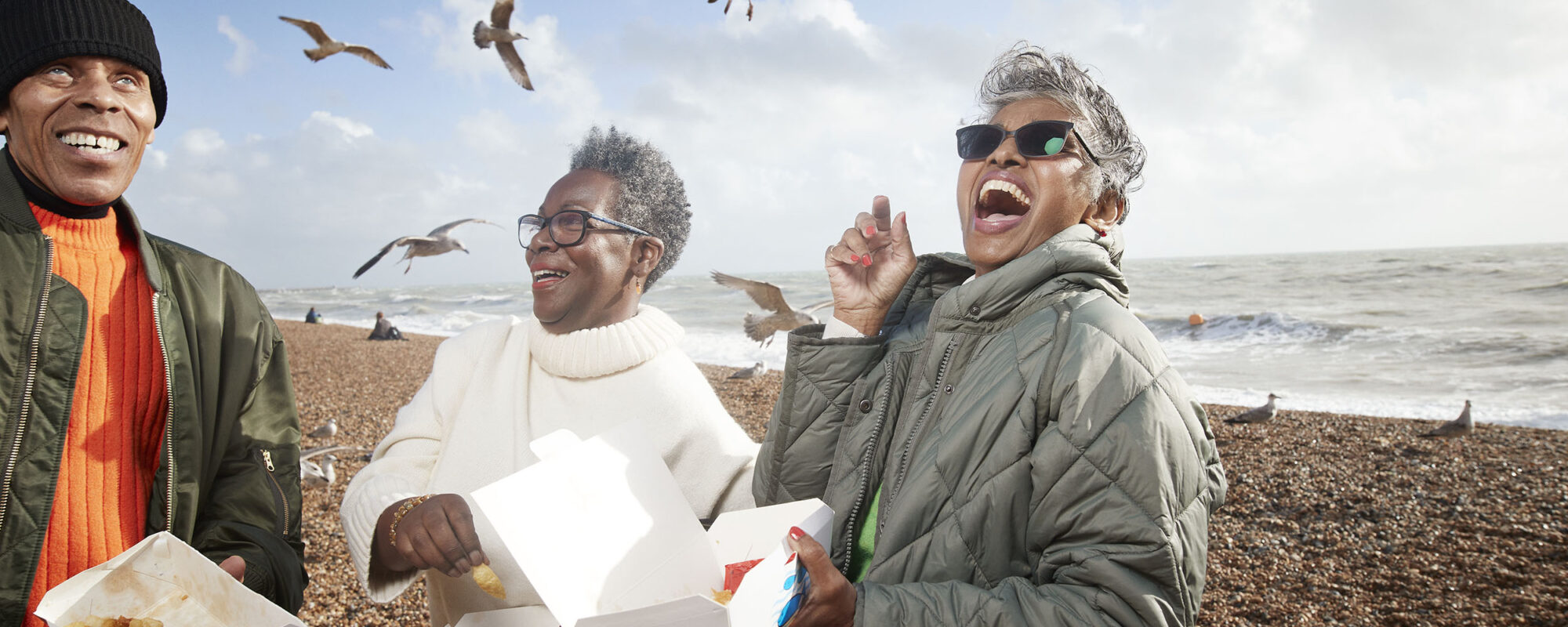“The Intern”
“The Intern” takes a humorous look at a real question: what happens when a government’s nuclear chain of command breaks down?
Nuclear Authority
In many countries, only a very few individuals would be involved in the decision to use nuclear weapons. For example in the U.S., the President is the sole authority for launching nuclear weapons. Assuming the order is lawful, the President requires no permission from any other person or branch of government. This burden of sole authority is passed through the regular US presidential line of succession. Should the President become incapacitated then the Vice President would be next in line, followed in order by the Speaker of the House of Representatives, the President pro tempore of the Senate, and so on.
It is extremely unlikely that an intern would be the only available successor, but it is worth understanding who is in line for the nuclear launch codes and to consider how decision-making could be compromised, for example, during a pandemic when multiple decision-makers could be incapacitated. During the recent COVID pandemic, a US President and many of the country’s military top decision-makers were infected by the virus and had to enter isolated quarantine. The pandemic may have also affected the capacity of personnel further down the organizational chain, for example at isolated, underground missile silos.

The Nuclear Decision Process
Prior to any nuclear launch decision, the President can consult with their advisors and lawyers. However, there is no requirement that the President do so, as the final decision is theirs alone. The order must survive two-person verification to be transmitted successfully. It is a common misconception that two-person verification is required to approve the launch order. This process does not substantively review the decision to launch or the reasons behind it. Two-person verification simply ensures that the order came from the president themself, or their acting successor. The US Department of Defense verifies the identity of the President and then sends the order onto the nuclear triad. The nuclear triad refers to the land-based, submarine, and bomber platforms used to deploy nuclear weapons.
The order that goes out is approximately “the length of a tweet” and begins a cascade of events for five land-based crews and at least one submarine crew. The land-based and submarine crews begin their own verification process which confirms that the “sealed-authentication system” codes match the ones which came from the Department of Defense order. They enter these codes into the system to retrieve the launch keys and unlock the missiles. When the land based crews turn the key, the crews transmit a “vote” to initiate the launch. The system must receive two of these “votes” to initiate the launch. Once again, this verification system is not to confirm the validity of an attack. It is to guarantee that even if a few of the launch crews are unwilling or unable to vote, for a variety of reasons, that the nuclear launch still takes place. This verification mechanism actually prevents the nuclear launch from being stopped and only takes two minutes. Submarine missile launch when the captain, executive officer, and two crew members authenticate the order within fifteen minutes of its arrival. Once these missiles are launched, they cannot be recalled or disarmed.
Bibliographic Notes
Sources
- Bruce G. Blair. Strategic Command and Control. Brookings Institution Press; 1st edition (May 1, 1985). Print.
- Mary B. De Rose and Ashley Nicolas. ”The President and Nuclear Weapons: Authorities, Limits, and Process.” NTI Paper, Nuclear Threat Initiative, (December 2019). https://media.nti.org/documents/The_President_and_Nuclear_Weapons_Authorities_Limits_and_Process.pdf
- Ernest J. Moniz and Sam Nunn. “The President and Nuclear Weapons: Implications of Sole Authority in Today’s World.” NTI Paper, Nuclear Threat Initiative, (December 2019). https://media.nti.org/documents/The_President_and_Nuclear_Weapons_Implications_of_Sole_Authority_in_Todays_World.pdf
- Amy F. Woolf, Paul K. Kerr, and Mary Beth D. Niktin. “Defense Primer: Command and Control of Nuclear Forces.” In Focus, Congressional Research Service, (December 2022). https://sgp.fas.org/crs/natsec/IF10521.pdf
“What are they hiding?” The IAEA and North Korea
The Federation of American Scientists reports that the US and Russia have over 11,000 nuclear weapons combined. France has nearly 300 and China has 410 as of March, 2023. North Korea has roughly 35 nuclear weapons. Notice a difference?
What is the IAEA?
The International Atomic Energy Agency (IAEA) is an international organization that regulates and promotes the peaceful use of nuclear power. It works with the 164 UN Member States to encourage the global exchange of scientific and technical nuclear information. Additionally, it develops atomic safety standards and verifies a country’s compliance with international nuclear agreements, such as the Nuclear Non-Proliferation Treaty.
In 1953, US President Dwight D. Eisenhower addressed the UN General Assembly in a speech remembered as “Atoms for Peace.” Eisenhower called for international action to utilize atomic energy for peaceful measures such as agriculture and medicine. He proposed the creation of a global agency that cooperated with governments to store and distribute nuclear materials worldwide.
His exact conception of the IAEA did not come to fruition as the IAEA does not store or maintain nuclear materials itself. However, in 1956, the United Nations General Assembly unanimously approved the IAEA’s Statute and came into force in 1957.

How does the IAEA verify peaceful activity?
The IAEA’s Department of Safeguards is charged with the task of discovering if a nation’s nuclear program is peaceful or aimed at producing nuclear weapons. First, a state will submit plans and design information for all its nuclear facilities. These submissions are then inspected and verified by the IAEA. According to the agency’s mandate, inspectors should always have access to places, data, or personnel related to nuclear materials. Following the inspection, the IAEA will issue a report detailing whether a country’s nuclear program adheres to the standards it has signed on to.
If a country’s government does not comply with IAEA guidelines about peaceful use and cooperation on nuclear technologies, the IAEA must report the violation to the United Nations Security Council. The United Nations Security Council is responsible for ensuring international peace and security for all 181 member governments of the UN. Once a recommendation is made by the IAEA to the United Nations Security Council, the member states discuss the best course of action. However, the government concerned must consent to any safeguards the IAEA wishes to implement. The IAEA has no authority to police any country that does not consent.
Like any United Nations agency, the IAEA relies on cooperation from all members and cannot independently execute punishment. Members of the United Nations may instead engage in diplomatic negotiations to encourage a non-complying country to adhere to existing agreements. If countries do not participate or follow the rules of agreements that already exist, United Nations members may place economic sanctions that restrict trade with the noncomplying country as punishment.
North Korea and the IAEA: A Timeline
One example of a UN member state that regularly conflicts with IAEA procedure is the Democratic People’s Republic of North Korea (DPRK). In 1993, the IAEA cited North Korea for not complying with its obligations under the agency’s agreed-upon norms. However, the DPRK responded by withdrawing from the Treaty on the Non-Proliferation of Nuclear Weapons (NPT).
Under the NPT, countries without existing nuclear weapons agreed not to pursue the development of nuclear weapons and allowed the IAEA to oversee the inspection of their nuclear sites. The North Korean government claimed the US and South Korea had arranged for IAEA officials to unjustly demand access to its military sites. The government argued that these sites had no relevance to nuclear activities. According to the North Korean government, inspection of military sites was not within the authority of the United Nations.
Following this dispute, the United States and North Korea temporarily resolved differences on nuclear technologies. In October 1994, the governments signed onto the Agreed Framework, and North Korea rejoined the NPT. Under this agreement, North Korea was to stop and dismantle its unauthorized nuclear reactors under the supervision of the IAEA. The government consented to allow the agency to take all steps necessary to ensure compliance with the Agreed Framework. Unfortunately, this agreement came to a screeching halt in 2002 when North Korea requested the immediate removal of IAEA inspectors. North Korea formally withdrew from the NPT in 2003.
United Nations member countries attempted diplomatic negotiations to reimplement safeguards in North Korea until 2009. The North Korean government permanently revoked international access to its facilities and announced it would be reactivating its unauthorized nuclear reactors. In 2018, North Korean leader Kim Jong Un announced that their nuclear weapons were complete. In the years since, the United States and North Korea have engaged in multiple negotiations about nuclear disarmament without coming to a binding agreement on either side.
Why does North Korea want nuclear weapons?
North Korea argues that it is not fair that other countries, such as the United States and Russia, have access to nuclear weapons. The government believes that nuclear weapons are a crucial part of defending its country against threats. North Korea uses nuclear weapons to supplement its military, which is not as large or technologically advanced as the militaries of countries it sees as a potential threat. North Korea fears that without a nuclear weapons program, countries like the United States may invade or otherwise threaten the stability of their government.
Bibliographic Notes
Sources
- John Brittain, et al. “The International Atomic Energy Agency: Linking Nuclear Science and Diplomacy”. Science and Diplomacy. June 22, 2015. https://www.sciencediplomacy.org/perspective/2015/international-atomic-energy-agency
- John Carlson. “Is the NPT Still Relevant? – How to Progress the NPT’s Disarmament Provisions.” Journal for Peace and Nuclear Disarmament, vol 2, no. 1, 2019, 97-113.
- INTERNATIONAL ATOMIC ENERGY AGENCY, The Law and Practices of the International Atomic Energy Agency, Legal Series, 1970
- Suk H. Kim “The Survival of North Korea: A Case for Rethinking the U.S.-North Korea Nuclear Standoff 1.” North Korean Review, vol. 11, no. 1, 2015, pp. 101-113
- Laura Rockwood. “How the IAEA Verifies If a Country’s Nuclear Program Is Peaceful or Not: The Legal Basis.” Bulletin of the Atomic Scientists, vol. 74, no. 5, Sept. 2018, pp. 317–25
For More Information
Check out the IAEA’s website for more information on its mission and current work. Join the IAEA as they follow the “A Day in the Life of a Nuclear Safeguards Inspector.”This article from the BBC lays out what we know as of 2022 about North Korea’s nuclear program. For a more comprehensive timeline of North Korea’s nuclear program, reference the Arms Control Association’s fact sheet or The Council on Foreign Relations timeline.



